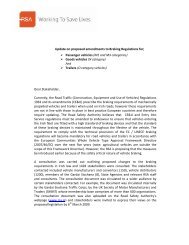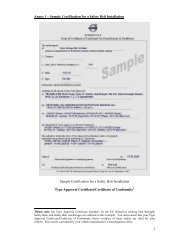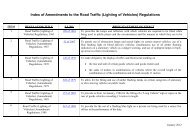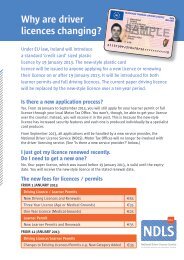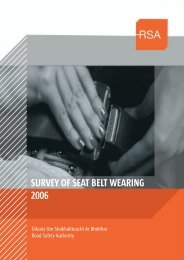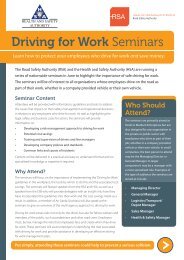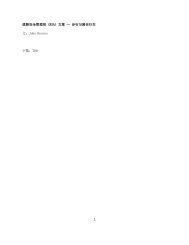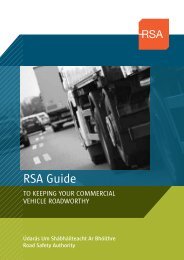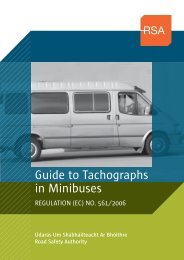NCT Manual. - National Car Testing Service
NCT Manual. - National Car Testing Service
NCT Manual. - National Car Testing Service
Create successful ePaper yourself
Turn your PDF publications into a flip-book with our unique Google optimized e-Paper software.
NATIONAL CAR TEST (<strong>NCT</strong>) MANUAL 2012<br />
42<br />
CHASSIS/UNDERBODY<br />
Method of <strong>Testing</strong><br />
1. Examine main chassis/sub-frame/underbody members for deformation and/or fractures and/or advanced corrosion<br />
(see Page 58 for criteria on corrosion).<br />
2. Examine cross members for deformation and/or fractures and/or advanced corrosion.<br />
3. Examine the welding and/or securing bolts/rivets for soundness and security.<br />
4. Examine frame/cross member junctions for indications of movement.<br />
NOTES<br />
1. The extent of this inspection is limited to that part of the chassis/sub-frame or underbody which can<br />
readily be seen without dismantling any part of the vehicle.<br />
2. Pay particular attention to a chassis or underbody which is encrusted with dirt. There may be cracks or<br />
fractures in high stress areas obscured by this dirt.<br />
3. Pay particular attention to areas around spring and running gear mountings.<br />
4. Page 68 indicates the main chassis members of typical vehicle construction.<br />
5. Where misalignment is suspected it may be necessary to confirm that the frame/chassis is within the<br />
manufacturer’s tolerances.<br />
6. Some cars (e.g. rally) may be fitted with additional non-standard underbody protection. If this covering<br />
inhibits proper inspection more than the manufacturer’s area of cover, it is the responsibility of the<br />
owner/presenter to make components accessible for inspection, otherwise the vehicle will fail due to the<br />
lack of accessibility.<br />
ITEM<br />
Chassis/Sub-frame/Underbody/<br />
Flitch Plates<br />
1 Welds breaking away.<br />
REASONS FOR FAILURE<br />
2 Cracked, insecure or pronounced misalignment.<br />
3 Loose rivets/bolts/bent members.<br />
4 Considerably weakened by holes.<br />
5 Advanced corrosion or other damage.<br />
6 Repairs or modifications obviously not in line<br />
with manufacturer’s recommendations.<br />
Note: While the <strong>NCT</strong>S manual does not specify a continuous<br />
weld, a judgement must be made as to whether the repair<br />
maintains the manufacturer’s original strength.<br />
67



